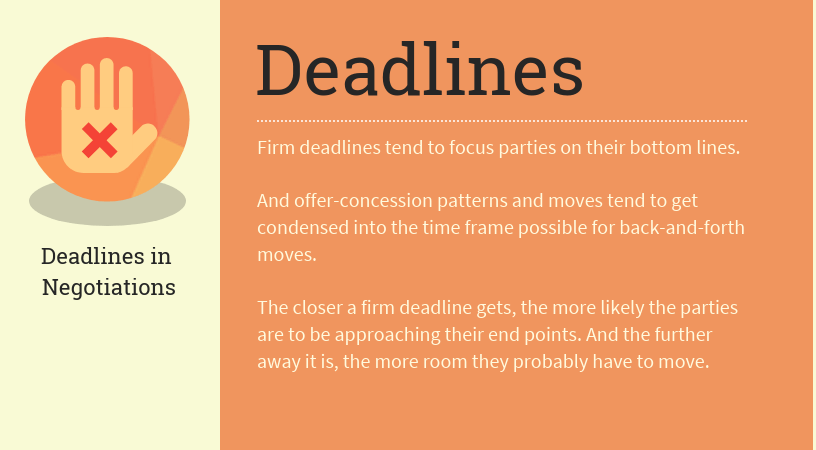“When should we just stop asking for more and sign the deal?”
I usually answer by noting that, at the end of the day, you must evaluate whether the value on the table is better or worse than your best alternative — your Plan B.
If it’s better than Plan B, sign the deal. If it’s worse, ask for more or walk. It’s a classic leverage decision.
But there’s more to it than leverage. Also consider these factors:
1. Does it satisfy your goals and interests?
Strategic negotiating involves setting goals, exploring interests and implementing strategies to achieve them. It also involves keeping these goals and interests front and center when making major strategic decisions.
So, circle back and re-evaluate whether the value on the table satisfies your goals and interests. If it does, strongly consider signing. If not, take a walk, or ask for more.
Of course, many want to exceed their goals. If so, consider the risk/reward ratio involved. Is the potential additional value you could get worth the risk of the deal blowing up? If so, give it a shot. If not, be satisfied with achieving your goals.
Also consider your relationship goal: Do you want a future relationship with your counterpart? If a longstanding business partnership is involved, you may not want to exceed your financial goals if it’s at your partner’s expense. That might come back to haunt you later.
2. How is leverage changing?
Have you done all you can to improve the value of your Plan B or create a better Plan B? Let’s say you’re the purchasing director for a retail store, and you have a bid from a supplier. It satisfies your goals, but you want to do better.
Before you evaluate whether to request more from that supplier, consider soliciting bids from other suppliers. Strengthen your leverage by increasing the likelihood of a better Plan B.
Of course, your counterpart also may be strengthening their Plan B to doing a deal with you. So find out their Plan B if you can. This will help you evaluate what they will do if you push harder.

3. How long and how much do the parties typically move?
An experienced lawyer once told me he can predict with a reasonable degree of certainty when most of his cases will settle, and for how much.
How does he know? He pays extremely close attention to settlement trends and patterns in his particular practice area — how long most cases take to settle, how many moves most parties make, and how much the parties typically concede. Because these patterns largely drive our expectations and what we do, he’s usually pretty accurate.
So how should you decide whether the other side has made its last, best offer? Analyze the patterns — what typically occurs — in that context and with your counterpart.
If most personal injury cases in City A settle with insurance company X a year or so after filing; after each party has moved three or four times; and after the plaintiff has reduced its initial demand by 300 percent and X has tripled its initial offer, you can view offers made within less than a year as not-yet-final moves.
Also pay attention to the increments in which your counterpart moves. Parties often taper their moves — conceding in smaller and smaller increments, signaling that they are getting closer and closer to their end points.
4. Does their language signal a “best and final” offer?
When parties indicate “best and final” or a “take it or leave it” Plan B that’s just slightly worse than what they’ve just put on the table, they signal total inflexibility. Understand this message, then evaluate whether they mean it.
How can you tell? Do your strategic due diligence and talk to folks with whom they have negotiated in the past. Find out their reputation in this regard.
5. Are you close to a firm deadline?
Firm deadlines tend to focus parties on their bottom lines. And offer-concession patterns and moves tend to get condensed into the time frame possible for back-and-forth moves.
The closer a firm deadline gets, the more likely the parties are to be approaching their end points. And the further away it is, the more room they probably have to move.
Speaking of firm deadlines, I’ve got one looming for this column. And that’s my “best and final” word on this subject.
Published December 7, 2007 The Business Journal


